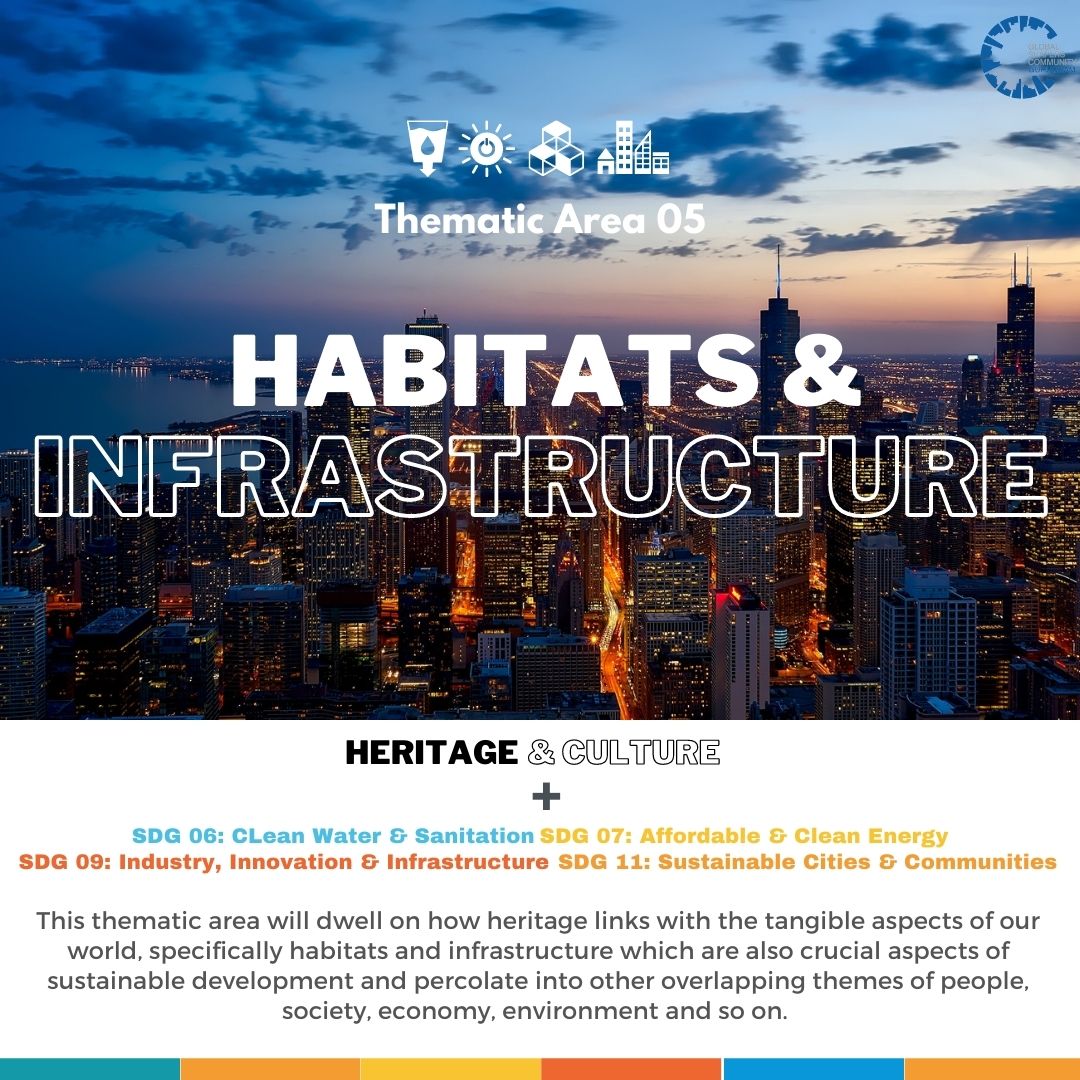
Heritage for Habitat and Infrastructure

When it comes to the contribution or interlinkage of heritage to sustainable development, it is important to note that Habitats and Infrastructure are perhaps the most tangible aspects in this consideration, but intertwined deeply with people, society, economy, nature and so on. Habitats and infrastructure have relations with many facets of our existence, from the water ecosystem which provides avenues for drinking and sanitation, to energy use, whether production or consumption, to how we interact and co-exist as a community or society, and more often than that, heritage sites have been at the epicentre of this. For example, water infrastructure such as historical aquifers, like Hauz Khas, have been the basis of human settlement and flourishing of civilization, and some intrinsic water systems which constitute as heritage have been the inspiration of for even modern day architects and urban planners (case in point, the drainage system of the Indus Valley Civilization).
Heritage sites have also been the inspiration for various innovations in energy-efficiency for modern-day infrastructure, given that many historic heritage sites which served as habitats leveraged sustainable material which allowed for natural insulation and cooling, inspiring contemporary green buildings and architecture.
Heritage encompasses traditional knowledge and practices which includes sustainable techniques for land management, water conservation, agriculture, and construction. Integrating traditional practices with modern sustainable approaches can result in more ecologically sensitive habitats and infrastructure.
Tangible heritage which constituted as habitats, and man-made heritage infrastructure needs to be revisited and understood better in the context of sustainable development, so lifestyles and communities conducive to sustainability which existed at the time of such heritage can be emulated now, for better alignment with nature, more resilience, and healthier living. It must also be noted that in the pursuit of sustainable industrialization or urbanisation, which constitutes the rapid development of infrastructure for habitats or otherwise, must not pose a threat to heritage, but rather develop in congruence with it. Heritage can also have undeniable benefits to our common sense of habitats and infrastructure when age-old practices in the vicinity of historic heritage sites like the shared use of streets, open and green spaces, historic urban landscapes where civilizations and communities thrived, are replicated, which may also help negate the rapid proliferation of industries which threaten the environment.
One must also understand that all natural heritage sites are thriving ecosystems for biodiversity, hence are natural habitats which must be protected and conserved for the sake of environmental sustainability. Many heritage sites are located within or adjacent to ecologically significant areas. Preserving these sites helps protect ecosystems, biodiversity, and natural habitats. By recognizing and conserving the environmental value of heritage areas, sustainable development can be achieved while safeguarding important natural resources.
Policies which recognize the role of heritage in promoting more sustainable habitats and infrastructure must be prioritised, and awareness for the same must be propagated. Historic buildings and infrastructure can be repurposed and renovated to meet modern standards of sustainability. This approach reduces the need for new construction and minimises resource consumption. Adaptive reuse of heritage structures can preserve their cultural value while also providing functional spaces for housing, offices, or community facilities.
Overall, in the context of sustainable development, the role heritage can play in ensuring habitats and infrastructures are more sustainable, and their intrinsic value in being reservoirs of sustainable knowledge and practices must be recognized, preserved, and awareness about it spread for better policies and societal understanding.
References:
- Heritage and the sustainable development goals: policy guidance for heritage and development actors, prepared by Prepared by the Sustainable Development Goals Working Group – Priority Action 1 Task Team, and published by International Council on Monuments and Sites – ICOMOS, Source Link: https://openarchive.icomos.org/id/eprint/2453/
- The Contribution of World Heritage to Sustainable Development, UNESCO. Source Link: https://whc.unesco.org/en/sustainabledevelopment/


